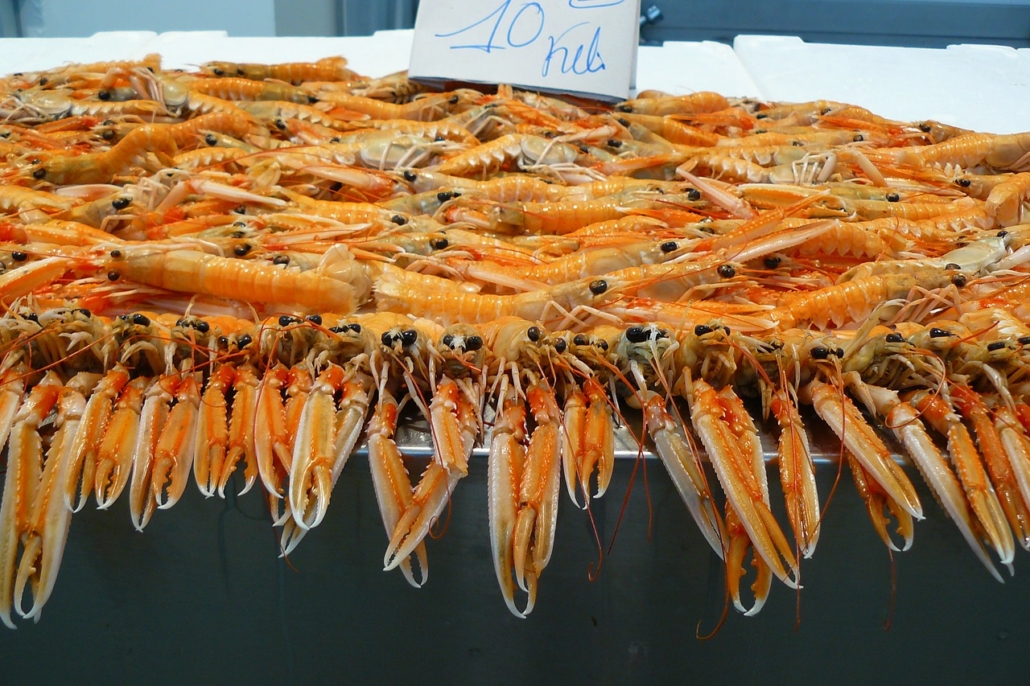[av_section min_height=’custom‘ min_height_px=’120px‘ padding=’small‘ shadow=’no-border-styling‘ bottom_border=’no-border-styling‘ bottom_border_diagonal_color=’#333333′ bottom_border_diagonal_direction=“ bottom_border_style=“ custom_margin=’20px‘ custom_margin_sync=’true‘ custom_arrow_bg=“ id=“ color=’alternate_color‘ background=’bg_color‘ custom_bg=’#00a4d6′ background_gradient_color1=“ background_gradient_color2=“ background_gradient_direction=’vertical‘ src=“ attachment=“ attachment_size=“ attach=’scroll‘ position=’top left‘ repeat=’no-repeat‘ video=“ video_ratio=’16:9′ overlay_opacity=’0.5′ overlay_color=“ overlay_pattern=“ overlay_custom_pattern=“ av_element_hidden_in_editor=’0′ av_uid=’av-jqqcuwc1′]
[av_textblock size=’20‘ font_color=’custom‘ color=’#ffffff‘ av-medium-font-size=“ av-small-font-size=“ av-mini-font-size=“ av_uid=’av-jqqcn7zg‘ admin_preview_bg=“]
Fischindustrie Abfälle für neue Batterieelektrode
[/av_textblock]
[/av_section][av_one_fourth first min_height=“ vertical_alignment=“ space=“ custom_margin=“ margin=’0px‘ row_boxshadow=“ row_boxshadow_color=“ row_boxshadow_width=’10‘ link=“ linktarget=“ link_hover=“ padding=’0px‘ highlight=“ highlight_size=“ border=“ border_color=“ radius=’0px‘ column_boxshadow=“ column_boxshadow_color=“ column_boxshadow_width=’10‘ background=’bg_color‘ background_color=“ background_gradient_color1=“ background_gradient_color2=“ background_gradient_direction=’vertical‘ src=“ background_position=’top left‘ background_repeat=’no-repeat‘ animation=“ mobile_breaking=“ mobile_display=“ av_uid=’av-2chqa‘][/av_one_fourth]
[av_one_half min_height=“ vertical_alignment=“ space=“ custom_margin=“ margin=’0px‘ row_boxshadow=“ row_boxshadow_color=“ row_boxshadow_width=’10‘ link=“ linktarget=“ link_hover=“ padding=’0px‘ highlight=“ highlight_size=“ border=“ border_color=“ radius=’0px‘ column_boxshadow=“ column_boxshadow_color=“ column_boxshadow_width=’10‘ background=’bg_color‘ background_color=“ background_gradient_color1=“ background_gradient_color2=“ background_gradient_direction=’vertical‘ src=“ background_position=’top left‘ background_repeat=’no-repeat‘ animation=“ mobile_breaking=“ mobile_display=“ av_uid=’av-4so6′]
[av_image src=’https://battery-news.de/wp-content/uploads/2020/07/shrimp-249152_1280-300×200.jpg‘ attachment=’4726′ attachment_size=’medium‘ align=’center‘ styling=“ hover=“ link=“ target=“ caption=“ font_size=“ appearance=“ overlay_opacity=’0.4′ overlay_color=’#000000′ overlay_text_color=’#ffffff‘ copyright=’icon-reveal‘ animation=’no-animation‘ av_uid=’av-jxf0aa6o‘ admin_preview_bg=’rgb(255, 255, 255) none repeat scroll 0% 0%‘][/av_image]
[/av_one_half][av_one_fourth min_height=“ vertical_alignment=“ space=“ custom_margin=“ margin=’0px‘ row_boxshadow=“ row_boxshadow_color=“ row_boxshadow_width=’10‘ link=“ linktarget=“ link_hover=“ padding=’0px‘ highlight=“ highlight_size=“ border=“ border_color=“ radius=’0px‘ column_boxshadow=“ column_boxshadow_color=“ column_boxshadow_width=’10‘ background=’bg_color‘ background_color=“ background_gradient_color1=“ background_gradient_color2=“ background_gradient_direction=’vertical‘ src=“ background_position=’top left‘ background_repeat=’no-repeat‘ animation=“ mobile_breaking=“ mobile_display=“ av_uid=’av-14sqi‘][/av_one_fourth]
[av_textblock size=’14‘ font_color=’custom‘ color=’#000000′ av-medium-font-size=“ av-small-font-size=“ av-mini-font-size=“ av_uid=’av-jqqkcgkn‘ admin_preview_bg=“]
Autor: Die Redaktion
Veröffentlicht am: 08.07.2020
[/av_textblock]
[av_hr class=’invisible‘ height=’50‘ shadow=’no-shadow‘ position=’center‘ custom_border=’av-border-thin‘ custom_width=’50px‘ custom_border_color=“ custom_margin_top=’30px‘ custom_margin_bottom=’30px‘ icon_select=’yes‘ custom_icon_color=“ icon=’ue808′ font=’entypo-fontello‘ av_uid=’av-jtfk6jks‘ admin_preview_bg=“]
[av_textblock size=“ font_color=’custom‘ color=’#000000′ av-medium-font-size=“ av-small-font-size=“ av-mini-font-size=“ av_uid=’av-jqb3bj28′ admin_preview_bg=“]
Ein Team von Wissenschaftlern, dass unter der Leitung des renommierten MITs steht, hat untersucht, in wieweit der Chitinpanzer von Garnelen zur Herstellung effizient ökologischer Vanadium-Redox-Flow-Batterie Elektroden genutzt werden kann.
Neben den dominierenden Lithium-Ionen-Batterien bieten Redox-Flow-Batterien eine, bereits in Teilen marktetablierte, Batteriespeicheralternative. Aufbauend hierauf untersuchten die Forscher einen Ansatz, indem sie eine klassischen Graphit Elektrode, durch ein Chitinprodukt ersetzten. Der auf der Biomasse basierende Forschungsansatz gewann eine Aktivkohle, welche den Schritt der generell üblichen postsynthetischen Modifikationen einer künstlich erzeugten Graphitstruktur überflüssig machte.
Während die Forscher bei ersten Prototypen bereits vielversprechende elektrische Batterieeigenschaften feststellen konnten, ist besonders die einfachste Verfügbarkeit des Ausgangsstoffes der biologisch gewonnen Elektrode interessant. Die hohe Anzahl organischer Chitin Ressourcen, die auf verschiedenen Kohlenstoff- und Stickstoffzusammensetzungen basieren, bietet eine interessante Möglichkeit für unterschiedliche Synthetisierungsrouten von graphithaltigen Elektroden. Während daraus zwar eine standardisierte Verarbeitung auf Basis eines gleichbleibenden Ausgangsstoff komplexer wird, erhöht sich die Nachhaltigkeit der Elektrodenproduktion erheblich.
“Obviously, there are carbon electrodes that can yield a better performance but the key to this project is to produce such electrodes from a waste material, in this case chitin from shrimp shells“, sagte Francisco Martin-Martinez, der als chemischer Ingenieur des MITs die Veröffentlichung der Forschungsergebnisse mit betreute.
Die Technologie ist Beispiel für einen aktuellen Trend im Bereich der Bio-Batterie. Batteriezellen soll künftig deutlich nachhaltiger produziert werden und im Idealfall nur noch auf erneuerbaren und einfach verfügbaren Ressourcen aufbauen. Der Weg hierin ist noch lang. Grundlagenforschungen wie die aktuell vorliegende ebnen jedoch langsam aber sicher den Weg.
[/av_textblock]
[av_textblock size=“ font_color=’custom‘ color=’#000000′ av-medium-font-size=“ av-small-font-size=“ av-mini-font-size=“ av_uid=’av-jqb3e8od‘ admin_preview_bg=“]
Quellen:
https://www.pv-magazine.com/2020/07/07/theres-something-fishy-about-latest-flow-battery-innovation/
https://pubs.acs.org/doi/10.1021/acssuschemeng.0c02427
[/av_textblock]
[av_hr class=’invisible‘ height=’50‘ shadow=’no-shadow‘ position=’center‘ custom_border=’av-border-thin‘ custom_width=’50px‘ custom_border_color=“ custom_margin_top=’30px‘ custom_margin_bottom=’30px‘ icon_select=’yes‘ custom_icon_color=“ icon=’ue808′ font=’entypo-fontello‘ av_uid=’av-jtfk6jks‘ admin_preview_bg=“]
[av_social_share title=’Artikel teilen‘ style=“ buttons=“ av_uid=’av-jte46m4z‘ admin_preview_bg=“]
[av_hr class=’invisible‘ height=’50‘ shadow=’no-shadow‘ position=’center‘ custom_border=’av-border-thin‘ custom_width=’50px‘ custom_border_color=“ custom_margin_top=’30px‘ custom_margin_bottom=’30px‘ icon_select=’yes‘ custom_icon_color=“ icon=’ue808′ font=’entypo-fontello‘ av_uid=’av-jtfk6jks‘ admin_preview_bg=“]
[av_hr class=’invisible‘ height=’50‘ shadow=’no-shadow‘ position=’center‘ custom_border=’av-border-thin‘ custom_width=’50px‘ custom_border_color=“ custom_margin_top=’30px‘ custom_margin_bottom=’30px‘ icon_select=’yes‘ custom_icon_color=“ icon=’ue808′ font=’entypo-fontello‘ av_uid=’av-jtfk6jks‘ admin_preview_bg=“]
[av_postslider link=’post_tag‘ wc_prod_visible=“ prod_order_by=“ prod_order=“ columns=’3′ items=’30‘ offset=’0′ contents=’title‘ preview_mode=’auto‘ image_size=’portfolio‘ autoplay=’yes‘ interval=’5′ av_uid=’av-juv3xr0v‘]




